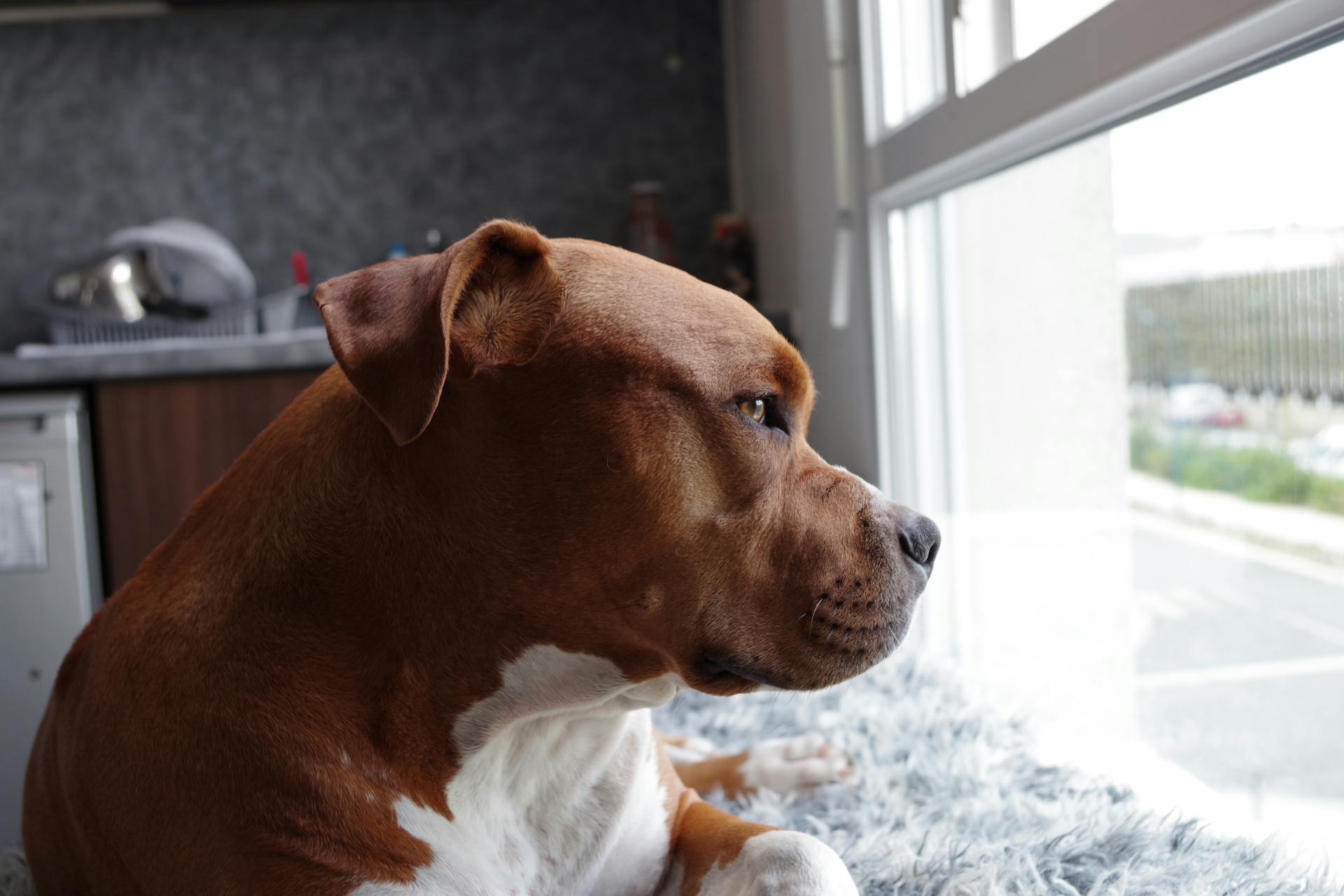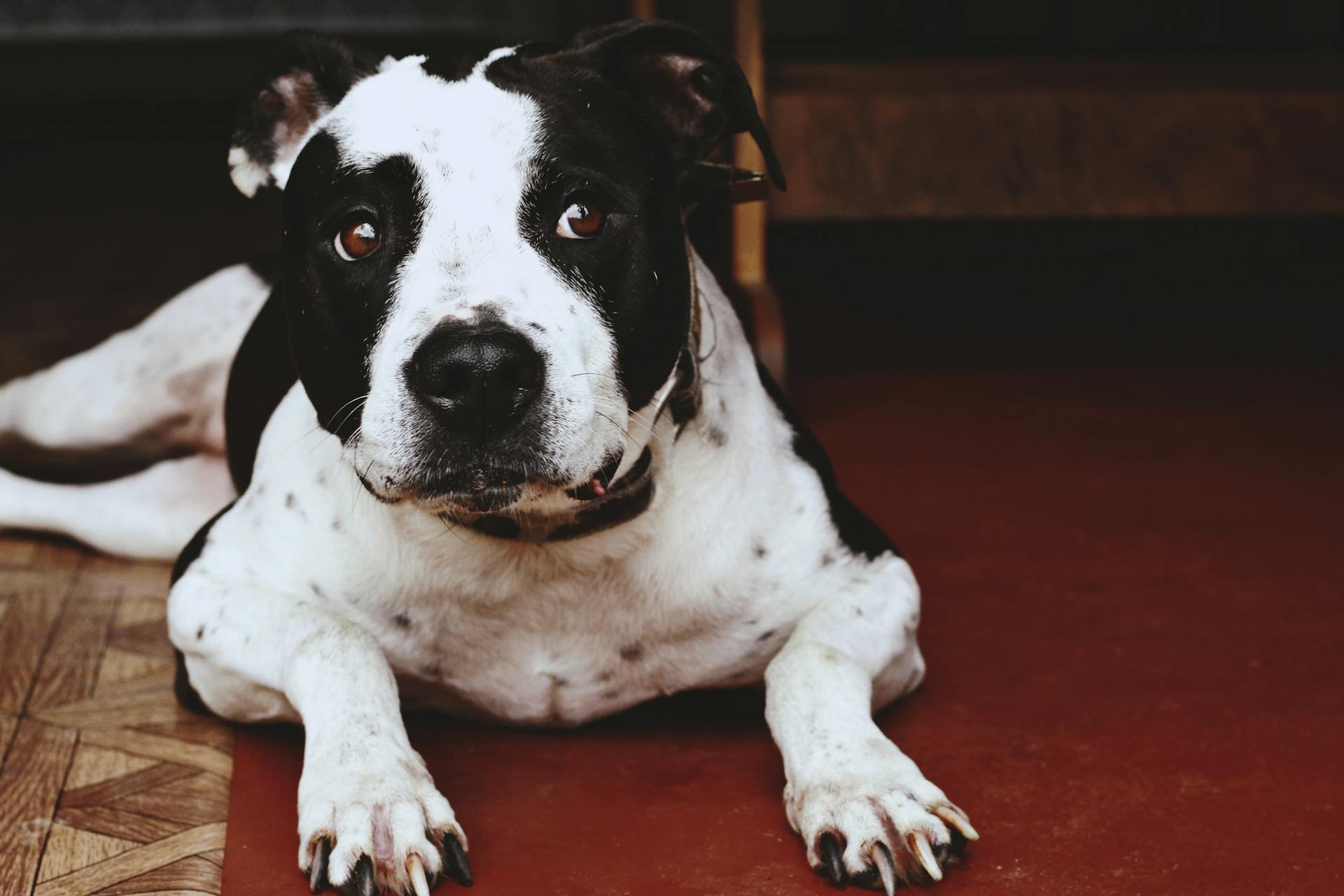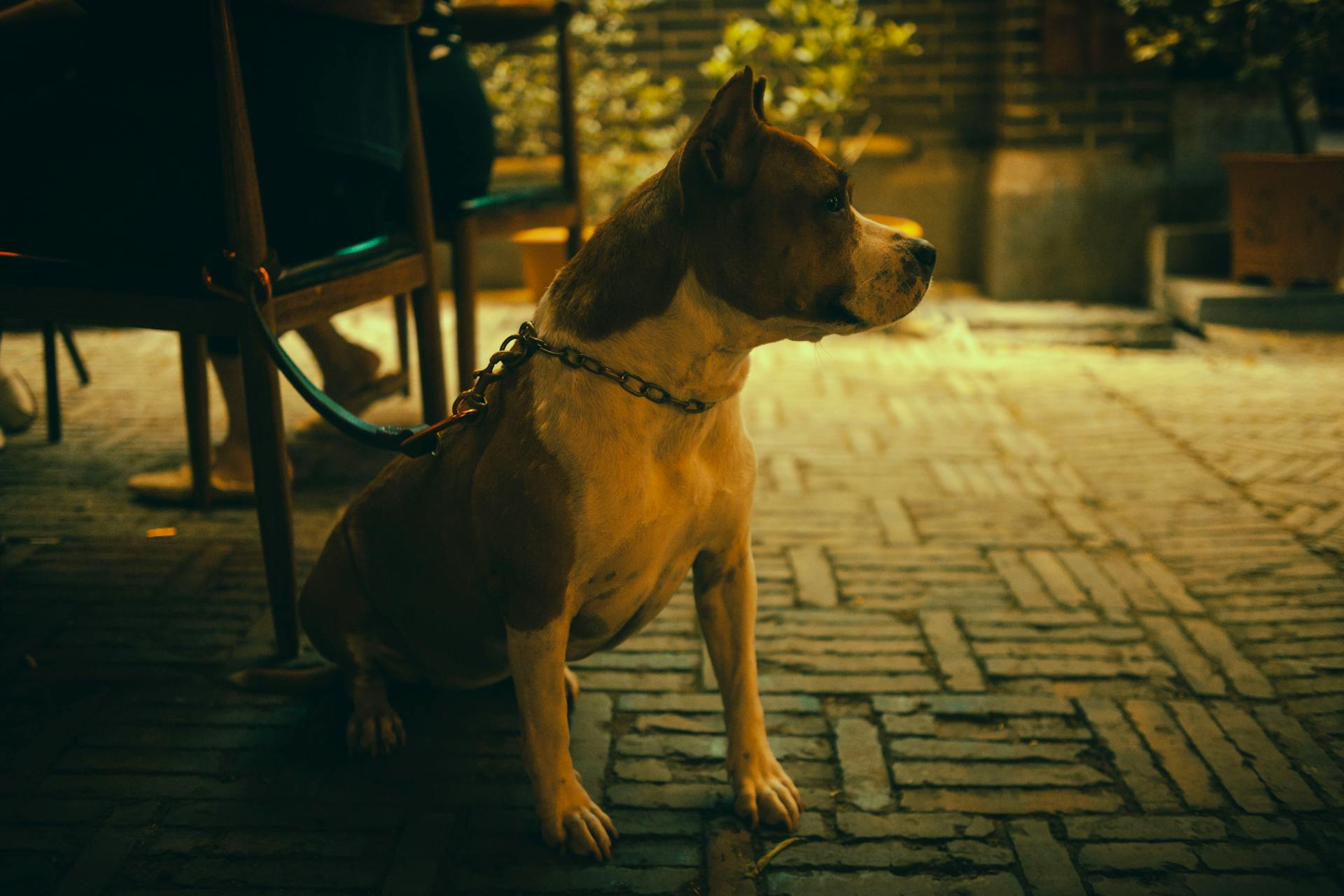
The Bull Terrier is a breed that's been around for over 150 years, with its origins dating back to the 19th century.
Their distinctive egg-shaped head is one of their most recognizable features, and it's a result of their breeding history.
The breed was developed in England by crossing the Old English Bulldog with the Old English Terrier.
Their short, easy-to-maintain coats come in a variety of colors, including fawn, white, and brindle.
Breed History
The Bull Terrier breed has a rich and fascinating history that spans over two centuries. It originated in England in the early 19th century from the crossbreeding of the Old English Bulldog with various terriers, including the White English Terrier and the Black-and-Tan Terrier.
This breeding effort aimed to combine the Bulldog's strength and tenacity with the terrier's agility and determination. Initially, these dogs were bred for bull-baiting and later adapted for dog fighting, a popular sport at the time.
The breed was refined over the years, with breeders like James Hinks playing a pivotal role in shaping the Bull Terrier into the breed we recognize today. Hinks aimed to create a more refined and attractive dog, suitable for both companionship and competitive showing.
The introduction of the Dalmatian and possibly the Greyhound into the breeding line contributed to the Bull Terrier's cleaner lines, more elegant stature, and distinctive white coat, earning them the nickname "White Cavaliers." Hinks' efforts resulted in the "White Cavalier", a dog known for its distinctive egg-shaped head, muscular build, and gentle yet spirited temperament.
The Bull Terrier was officially recognized as a breed in the late 19th century, with the formation of the Bull Terrier Club in 1887 marking a significant milestone in its breed history. This recognition formalized the breed's standards and established it as a distinct breed separate from its bull-and-terrier ancestors.
The breed has come a long way since its fighting origins, with many breeders today focusing on developing a dog that is both a loyal companion and a talented show dog.
Breed Characteristics
The Bull Terrier is renowned for its distinctive physical features, most notably its unique egg-shaped head, which is almost flat at the top with a Roman nose that curves downwards.
Bull Terriers have one-of-a-kind eyes, triangular in shape and set closely together, giving them a keen and determined expression.
Their body is muscular and well-built, with a short, dense coat that can be either white or colored, with the white coat being traditionally bred by James Hinks.
Bull Terriers rarely bark, except for a good reason, so if you notice your Bull Terrier barking, it's worth paying attention to what's causing it.
Despite their tough ancestry as fighting dogs, Bull Terriers have a very high temperament rating compared to other breeds, making them a great companion animal.
Characteristics
The Bull Terrier's unique triangular eyes are a one-of-a-kind feature that sets it apart from other breeds. These small, dark, and deep-set eyes give the Bull Terrier a keen and determined expression.
Bull Terriers can be prone to acne and obsessive-compulsive behavior, which can manifest in tail-chasing, self-mutilation, and self-licking. This is a serious issue that requires attention from owners.
One of the most distinctive features of the Bull Terrier is its egg-shaped head, which is almost flat at the top with a Roman nose that curves downwards. This unique head shape is a hallmark of the breed.
Bull Terriers are known for their strong, athletic build and muscular body, making them a robust and energetic breed. They were originally developed from fighting dogs, but today they are beloved companions.
In the UK, pure white terriers are preferred, but skin pigmentation and markings on the head are not penalized in the show ring.
Worth a look: Bull Terrier Head Shape
Terrier Temperament
The Bull Terrier temperament is a unique blend of strength and gentleness. This breed is known for its spirited and gentle heart, making it a beloved companion for many families.
Bull Terriers are naturally affectionate and playful, but they can also be stubborn at times. They require an assertive owner who can provide consistent training and positive reinforcement.
One of the most distinctive features of the Bull Terrier is its triangular eyes, a characteristic that sets it apart from other breeds. With proper socialization, Bull Terriers can be very friendly and outgoing.
Bull Terriers are strong-willed and independent, making them unsuitable for inexperienced dog owners. They require regular exercise to keep them mentally and physically stimulated.
Despite their tough appearance, Bull Terriers are gentle and friendly with their families, often forming strong bonds with their owners. They can be quite mischievous, which can make training a challenge.
Bull Terriers are protective of their families and can be wary of strangers, making early socialization crucial to developing a well-adjusted and sociable dog. With the right training and socialization, Bull Terriers can thrive in a variety of roles, from companion animal to therapy dog.
Terrier Facts
The Bull Terrier is often called the "Gladiator of dogs".
Their miniature counterpart, the Miniature Bull Terrier, is a smaller version of the standard breed.
Ted Lyod introduced color to the breed in the early 20th century to address health problems in all-white Bull Terriers.
Terrier Care and Ownership
Terriers are a high-energy breed that requires regular exercise to stay happy and healthy.
They need at least 30 minutes of exercise per day, which can include walks, runs, and playtime in the yard.
Terriers are prone to obesity if they don't get enough physical activity, so it's essential to keep them active.
Terriers with Children and Other Pets
Bull Terriers can be excellent companions for children, often displaying a patient and protective demeanor towards them.
Their playful nature makes them great playmates for older children, although their size and energy may be overwhelming for very young children.
Interactions between dogs and children should always be supervised, just like with any other breed.

Bull Terriers' prey drive can vary, and while many live peacefully with other dogs and cats, especially if raised together from a young age, some may exhibit strong prey instincts towards smaller animals.
Proper socialization, training, and careful introduction are essential to fostering positive relationships between Bull Terriers and other pets.
With patience and proper introduction, many Bull Terriers can live harmoniously with other pets, making them a great addition to multi-pet households.
Readers also liked: Border Terrier Life Expectancy
Grooming Needs of a Terrier
Terriers are known for their short, flat coats, which means they have relatively low grooming needs. Regular brushing, usually once a week, is sufficient to remove loose hair and maintain the coat's condition.
Bull Terriers, for example, can shed seasonally, so more frequent brushing may be necessary during these periods.
Their short coats don't mean they're completely maintenance-free, though - nail trimming, ear cleaning, and dental care are essential for maintaining their overall health.
Terrier Club
The Bull Terrier Club was established in 1887 and is one of the oldest breed-specific clubs in the world.
This club played a crucial role in the standardization and promotion of the Bull Terrier, defining the breed standard and organizing dog shows and events.
The Bull Terrier Club helped to guide breeders in producing dogs that conformed to the desired physical and temperamental traits, which is essential for responsible dog ownership.
The club's efforts have been central to the Bull Terrier's transition from a fighting dog to a respected show dog and beloved companion.
By promoting the breed's qualities and organizing dog shows, the Bull Terrier Club contributed to the breed's popularity and recognition worldwide.
The Bull Terrier Club's formation marked a significant milestone in the breed's history, helping to establish the Bull Terrier as a distinct breed separate from its bull-and-terrier ancestors.
Broaden your view: American Kennel Club Lancashire Heeler
Terrier Information and Resources
Bull Terriers have a fascinating history, and one of the key figures in their development was Ted Lyod. He introduced color to the breed in the early 20th century by crossing them with Staffordshire bull terriers.
This move was a response to health problems that were affecting many all-white bull terriers. By introducing color, Lyod was able to create a more robust and healthy breed.
Bull Terriers are often referred to as the "Gladiators of dogs" due to their athletic build and energetic personalities.
If you're interested in learning more about the different varieties of bull terriers, you might be surprised to know that there's also a miniature counterpart to the standard breed.
Here's a brief rundown of the different types of bull terriers:
- Standard Bull Terrier
- Miniature Bull Terrier
These two varieties share many of the same characteristics, including their muscular build and short coats.
Frequently Asked Questions
What is the oldest English bull terrier in the world?
There is no verified Guinness World Record for the oldest English Bull Terrier, but Maximus Bodacious, a 24-year-old English Bull Terrier, is reportedly one of the oldest dogs of his breed.
How long can English Bull Terriers live?
English Bull Terriers typically live for 11-13 years with proper care. Regular checkups can help identify potential health issues early on.
What two dogs make a Bull Terrier?
A Bull Terrier is a cross between the old English terrier and the bulldog, with later influences from the Spanish Pointer and other breeds. This unique mix of ancestors has shaped the breed's distinctive appearance and temperament.
Featured Images: pexels.com


